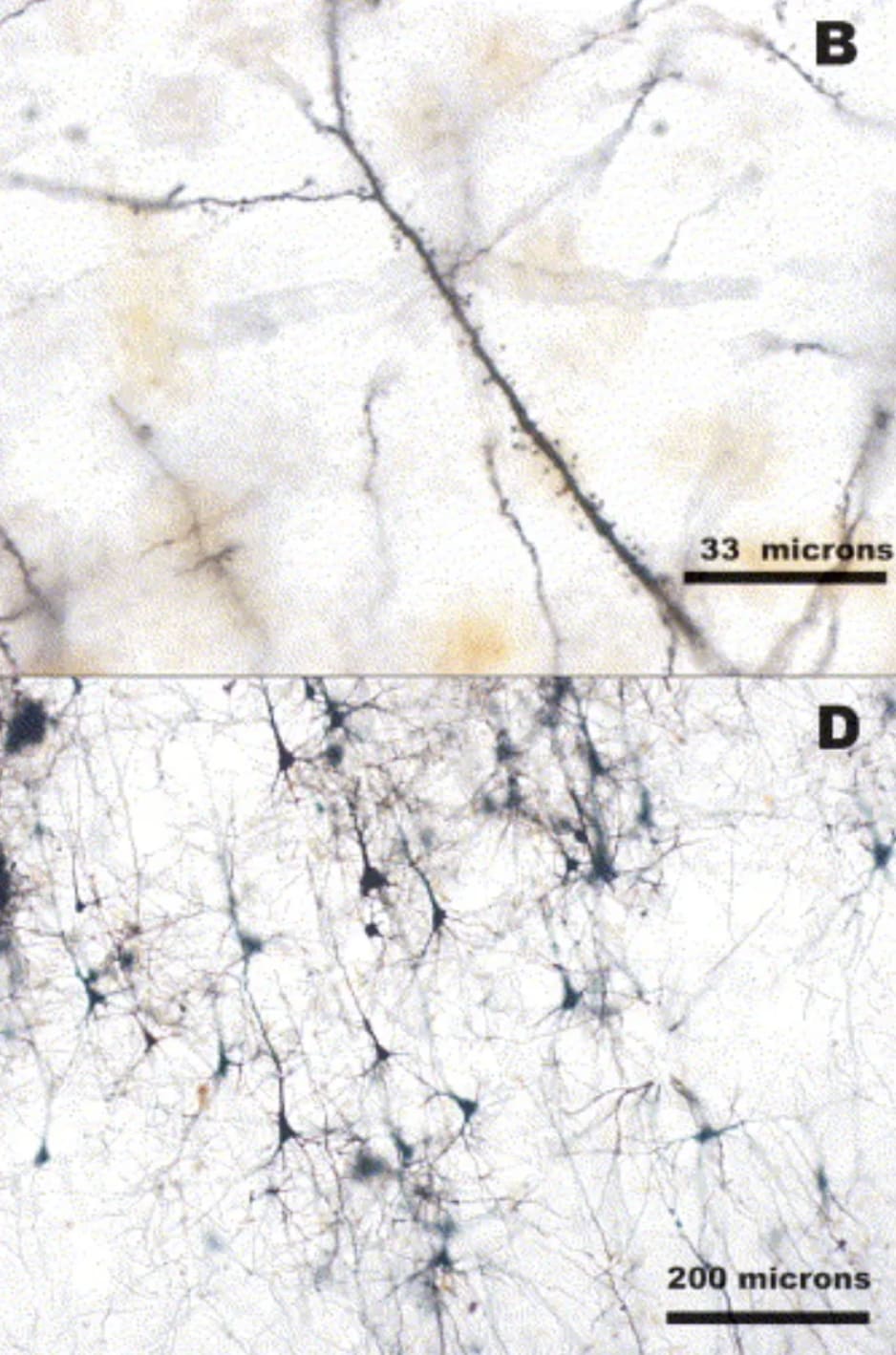I first learned about cryonics when I read Eliezer and Robin's posts about it on Overcoming Bias years ago. I got cryopilled. Somewhat amazingly to me, I'm now a researcher in this field. So I thought this community might be interested to know that I was one of several co-authors on a paper just published in Frontiers in Medical Technology, titled "Structural brain preservation: a potential bridge to future medical technologies".
In this paper, we propose reframing cryonics as a type of structural brain preservation, focusing on maintaining the brain's physical structure that encodes memories and personality, rather than making the focus about low-temperature storage per se.
We explore what brain structures likely need to be preserved to retain long-term memories and other valued aspects of personal identity. We then review different methods of brain preservation, including cryopreservation, aldehyde-stabilized cryopreservation, fluid preservation, and fixation followed by polymer embedding. The paper also discusses the two most commonly discussed potential future revival technologies, i.e. molecular nanotechnology and whole brain emulation.
We argue that this structural preservation framing may be more technically grounded and agreeable to mainstream researchers than some of the traditional ways that cryonics has been discussed.
As a personal reflection here, I want to briefly discuss the idea of fluid preservation, which is one topic discussed in our review paper. I remember first reading about this idea in approximately 2017 on a cryonics mailing list. Even though I was already sold on the idea of aldehyde-stabilized cryopreservation -- using fixation as a short-term bridge to cryoprotection and cryopreservation, I remember thinking that the idea of simply leaving the brain in fixative solution for the long-term was bizarre and outlandish.
Around 2020-2022, I spent a good amount of time researching different options for higher temperature (and thus lower cost) brain preservation. Mostly I was looking into different methods for embedding fixed brain tissue in polymers, such as paraffin, epoxy, acrylates, or silicon. I also studied the options of dehydrated preservation and preserving the fixed brain in the fluid state, which I was mostly doing for the sake of completeness.
To be clear, I certainly don't want to make it seem like this was a lone wolf effort or anything. I was talking about the ideas with friends and it was also in the zeitgeist. For example, John Smart wrote a blog post in 2020 about this, titled "Do we need a noncryogenic brain preservation prize?" (There still is no such prize.)
In 2022, I was reading various papers on brain preservation (as one does), when I came across Rosoklija 2013. If I recall correctly, I had already seen this paper but was re-reading it with a different eye. They studied human and monkey brain tissue that had been preserved in formalin for periods ranging from 15 months to 55 years, using the Golgi-Kopsch silver staining method to visualize neuronal structures. They reported that even after 50 years of formalin fixation at room temperature, the method yielded excellent results. In particular, they had this figure:

That's a picture showing well-impregnated neurons with preserved dendritic spines. Looking at this picture was a viewquake for me. I thought, if fluid preservation can preserve the structure of the 1-5% of cells that are stained by the Golgi–Kopsch method, why not other cells? And if it can work in this one part of the brain, why not the whole brain? And if it can do it for 50 years, why not 100 or 150? Chemically, it is not clear why there would be differences across the tissue. Aldehydes crosslink biomolecules in all parts of the tissue. And I already had decided that cell membrane morphology is likely one of the most important structures for encoding the information about long-term memories in the brain. I immediately told one of my friends in the lab I was working in about it.
More research into fluid preservation led to a separate publication on the topic. There are some complexities, but I personally haven't yet found anything which convinces me that this wouldn't work. Fluid preservation has advantages in terms of demonstrated stability for years in brain banks and cost-effectiveness. Because it is so inexpensive, Oregon Brain Preservation (where I work as a researcher) is currently able to offer this service for free in Washington, Oregon, and Northern California, as part of a research study in which very small biopsy samples would also be taken to measure preservation quality.
I want to make it clear that I'm still not sure whether fluid preservation will work. More research needs to be done on it. It is experimental. Personally, I would argue that all contemporary options for brain preservation in humans are experimental. Perhaps the two main points of the review paper we just published on structural brain preservation are that (a) contemporary methods for brain preservation -- including cryopreservation -- are reasonable, but that (b) more research should be done on it to attempt to corroborate the idea of structural brain preservation, better figure out whether it could work, and improve the preservation methods.
Thanks for reading this post. If you're interested in helping with any efforts in this field, please let me know because we could certainly use the help. Simply reflecting on the topic and potentially discussing it with others -- if you think it is a valuable idea -- is probably one of the most helpful things that you can do, because the topic is still very much considered "weird".

Executive summary: A new paper reframes cryonics as structural brain preservation, focusing on maintaining the brain's physical structure to potentially enable future revival technologies, with fluid preservation emerging as a promising and cost-effective method.
Key points:
This comment was auto-generated by the EA Forum Team. Feel free to point out issues with this summary by replying to the comment, and contact us if you have feedback.